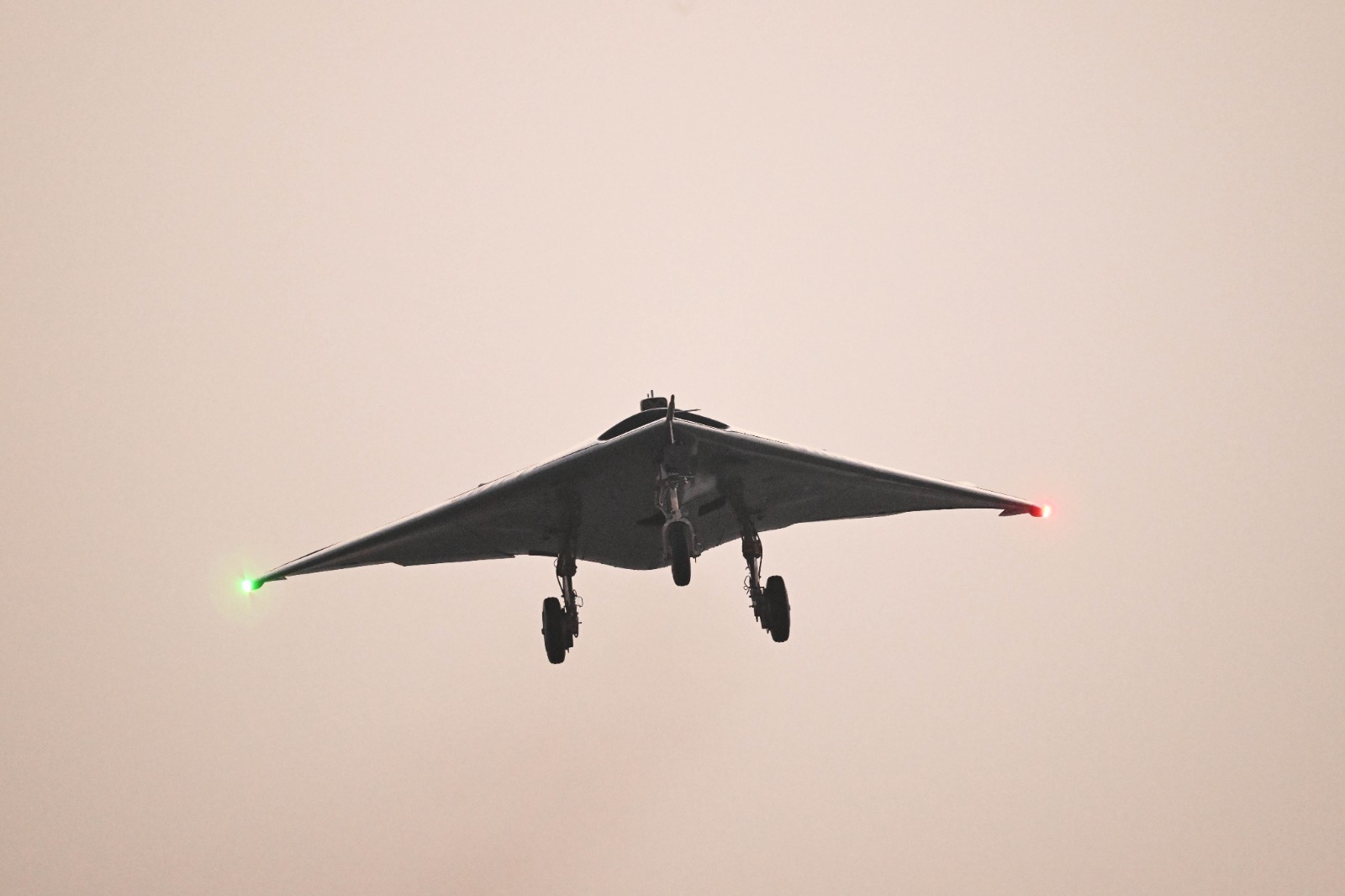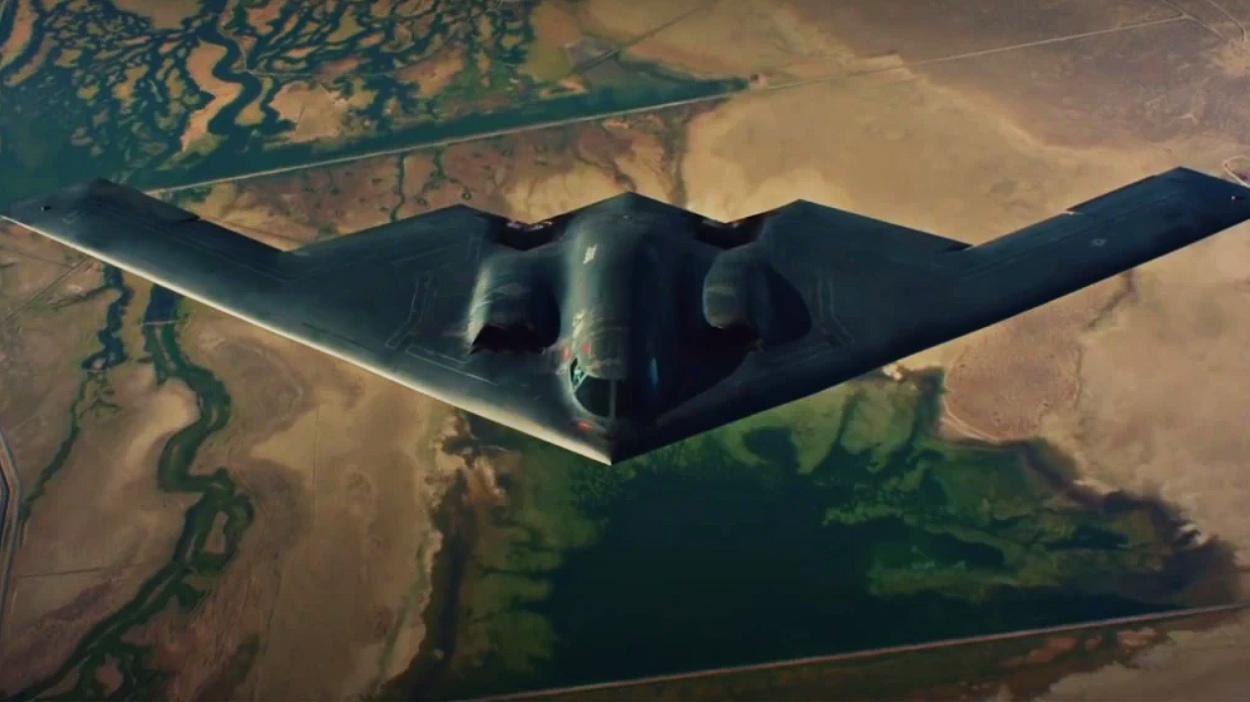On December 15, India joined an elite club of nations with the capability to deploy flying wing technology, successfully testing the Autonomous Flying Wing Technology (AFWT) Demonstrator in its final configuration, a scaled-down version of its futuristic unmanned combat aerial vehicle.
The Ministry of Defense announced that its Defense Research and Development Organization (DRDO) conducted the flight trial of the AFWT Demonstrator, a locally developed high-speed flying wing Unmanned Aerial Vehicle from the Aeronautical Test Range at Chitradurga in Karnataka in southern India.
“The successful flying demonstration of this autonomous stealth UAV is a testimony to the maturity in the technology readiness levels in the country. With this flight in the tailless configuration, India has joined the elite club of countries to have mastered the controls for the flying wing technology,” the statement said.
The AFWT Demonstrator is one of the two prototypes designed and developed by the Bangalore-based DRDO’s Aeronautical Development Establishment. The Demonstrator was flight tested for the first time in July 2022, and the test on December 15 was the seventh iteration of the trials of the tail-less configuration of the UAV.
“With this flight in the tailless configuration, India has joined the elite club of countries to have mastered the controls for the flying wing technology,” the statement said. “The maiden flight of this aircraft was demonstrated in July 2022, followed by six flight trials in various developmental configurations using two in-house manufactured prototypes.”

These flight tests led to achievements in the development of a robust aerodynamic and control system, integrated real-time and hardware-in-loop simulation, and a state-of-the-art Ground Control Station. “The team had optimized the avionic systems, integration, and flight operations toward the successful seventh flight in the final configuration.”
The aircraft prototype, with a complex arrowhead wing platform, is designed and manufactured with lightweight carbon prepreg composite material developed indigenously. Also, it claimed that the composite structure, impregnated with fiber interrogators for health monitoring, showcases “self-reliance” in aerospace technology.
The high-speed AFWT Demonstrator achieved autonomous landing without ground radar, infrastructure, or pilot intervention. This “showcased a unique capability demonstration, allowing take-off and landing from any runway with surveyed coordinates.”
The autonomous landing was possible using onboard sensor data fusion with indigenous satellite-based augmentation using GPS-aided GEO-augmented navigation (GAGAN) receivers to improve the accuracy and integrity of GPS navigation.
India’s Minister of Defense, Rajnath Singh, said the successful development of such critical technologies indigenously will further strengthen the armed forces.
India’s Center for Air Power Studies chief Air Marshal Anil Chopra (Retired) recently explained the Flying Wing Technology in detail on EurAsian Times.
India achieves a significant milestone in #UAV technology! @DRDO_India successfully conducts a flight trial of the Autonomous Flying Wing Technology Demonstrator, an indigenous high-speed flying-wing #UAV.
More: https://t.co/CjfADNB0dl@rajnathsingh @giridhararamane pic.twitter.com/wgbIG0SDXR— A. Bharat Bhushan Babu (@SpokespersonMoD) December 15, 2023
First Trial Of AFWT Demonstrator
On July 1, 2022, India conducted the maiden flight test of the AFWT Demonstrator, and it was claimed to be the precursor to future combat drones. At that time, India had called the technology ‘Stealth Wing Flying Testbed’ or just SWiFT.
“Operating in a fully autonomous mode, the aircraft exhibited a perfect flight, including take-off, waypoint navigation, and a smooth touchdown. This flight marks a major milestone in proving critical technologies for the development of future unmanned aircraft. It is a significant step towards self-reliance in such strategic defense technologies,” India said.
A Russian NPO Saturn 36MT turbofan engine powers the 1-ton SWiFT platform. The platform had completed taxi trials in September 2021.
ADE, the developer of the AFWT Demonstrator, works on unmanned aerial vehicles, flight simulators, pilotless target aircraft, plight control systems, and aerial weapons.
DRDO officials then highlighted the flying wing structure of the technology demonstrator, which refers to a tailless fixed-wing aircraft that houses its payload and fuel in its main wings and does not have a defined fuselage-like structure found in conventional aircraft.
Like the advanced bombers such as American Northrop Grumman’s B-2 ‘Spirit’ in the US military aviation fleet, India’s AFWT Demonstrator, DRDO scientists said, has the potential to deliver high fuel efficiency and stealth if executed with precision.

The flying wing aircraft has a key operational advantage because it has low reflective cross sections, resulting in a low radar signature, making it a stealth machine, the Indian Express reported then.
Because of the shape, the aircraft also has shallow drag or air resistance. However, this unique design also comes with handicaps such as stability and thus requires additional systems to support its flight.
According to officials, the Demonstrator’s airframe, the landing gear used for take-off and landing, and the entire flight control and avionics systems have been developed locally in India.
The AWFT Demonstrator will further undergo development and testing on its scale and capabilities to see if it can be armed and deployed as an Unmanned Combat Aerial Vehicle or UCAV.
The DRDO is already working on a UCAV — tentatively christened Ghatak or Autonomous Unmanned Research Aircraft (AURA) — for the Air Force and the Navy, and the AWFT Demonstrator will come in handy for the defense scientists to experiment with their ideas on arming the drone. The Indian UCAV will be armed with air-launched missiles and precision-guided munitions.
DRDO has a history of drone development, though it has been slow in getting these UAVs operational in the Indian armed forces. These unmanned aerial platforms include the Nishant, Rustom, Tapas, and Lakshay, all with different capabilities and functional roles.
In July 2021, the DRDO also unveiled its anti-drone technology to neutralize enemy UAVs with the capability of counterattacks, including detection and hard kill with both kinetic and laser-based countermeasures, apart from soft kill for jamming the communication links of the drone.
The next step is to develop a proven autonomous combat surveillance platform. The success of the AWFT Demonstrator will push the Indian government to grant funding for the full-fledged development of the Ghatak UCAV.
- NC Bipindra is a 30-year veteran in journalism specializing in strategic affairs, geopolitics, aerospace, defense, and diplomacy. He has written extensively for the Times of India, New Indian Express, Press Trust of India, and Bloomberg News. He can be reached at ncbipindra (at) gmail.com
- Follow EurAsian Times on Google News




